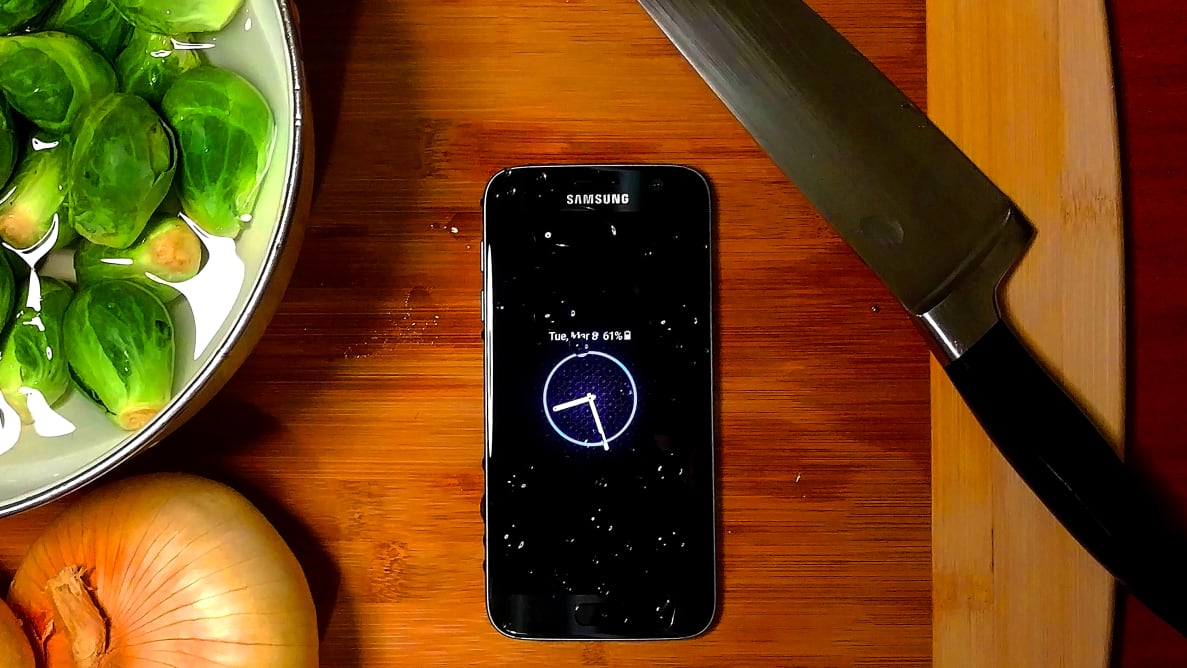This change in emphasis meant that certain features—expandable storage and waterproofing, for example—fell by the wayside. The S6 was indeed a stunner, but it shed some of the features that drew consumers to the Galaxy line in the first place.
The Samsung Galaxy S7 (MSRP $699.99) is a little different. It still puts design above all else, but Samsung was able to sneak back in some of those key features that were lost in the transition between the S5 and the S6. The result is a near-perfect blend of high-quality build and the features users love.
There are certainly a handful of flaws to discuss (Samsung's Android skin isn't always my favorite and the display wasn't nearly as accurate as we'd heard), but when you put those complaints up against everything the S7 hits out of the park, it almost feels comical. The Galaxy S7 is one of the best smartphones money can buy.
Design
If you're at all familiar with the Galaxy S6, the S7's form factor won't come as a surprise to you. For a lot of people (myself included), the lack of a radical redesign is a good thing; the Galaxy S6 handled like a dream and looked good doing it.
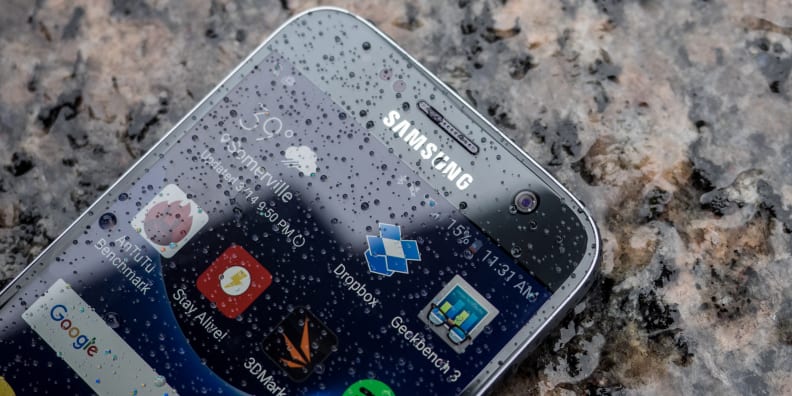
Rain or snow? No problem.
The handsome glass-and-aluminum outfit is back, of course, but the S7 has a slightly deeper body than its predecessor. This slight increase in size and weight gives the S7 a much-needed oomph, and as a result, the S7 does a much better job nestling into the palm of your hand. Even with a 5.1-inch screen, it never feels quite as big as it actually is.
The glass on the backside of the S7 is quite soft, which minimizes slipperiness but maximizes fingerprint smudges; seriously, get ready to be cleaning your phone constantly. If you're at all obsessive about keeping your phone fingerprint-free, you might want to keep your S7 in a case.
{{ photo_gallery name="Samsung Galaxy S7 Design Shots" }}
The phone's camera hump is less-pronounced this year as well, but I can't imagine that this will be seen as a negative by anyone. It's not entirely flush with the backside of the phone, but it's way less of an intrusion than the sensor on the back of the S6 Edge+ and the Note 5.
I honestly can't find that many flaws with the S7 from a design standpoint. The phone's got all the right angles and dimensions for a device of its size, and you'd be hard-pressed to find a more comfortable smartphone on the market right now.
Hardware & Performance
The Galaxy S7 isn't cheap, but take it for a spin for just five minutes and its premium price will start to make sense. In the world of smartphones, there's this, and then there's pretty much everything else.
Like all OLED displays, The S7's 5.1-inch AMOLED screen—which displays a stunning 1440x2560 resolution—is capable of searingly-bright highlights and dark, inky black levels. After testing the display, we were disappointed to find that it wasn't quite as accurate as previous reports had indicated, but it's sharp and vivid enough that you're not likely to notice.
Qualcomm's new Snapdragon 820 chipset is finally making its way into flagship phones and, let me tell you, the future is looking mighty bright. The S7 ripped through our processor benchmarks and didn't show any of the heat or throttling issues we saw with last year's Snapdragon 810 (I'm looking at you, LG G Flex 2). In use, slow-downs and hang-ups were virtually non-existent. No matter how fast you think you can jump from app-to-app, the S7 will assuredly keep up with you.
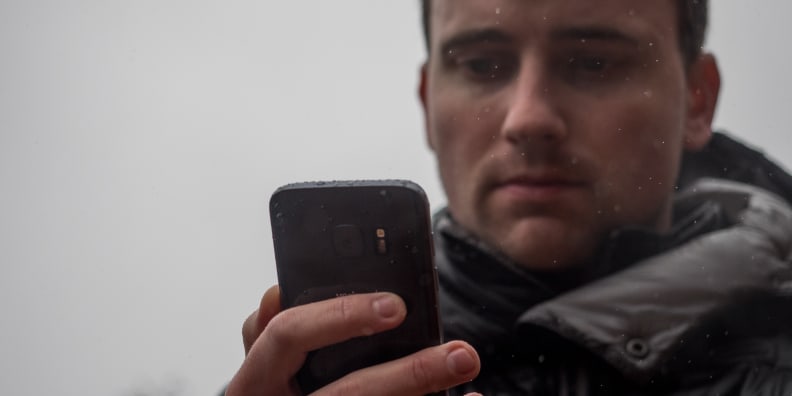
Despite its 5.1-inch frame, the S7's form factor is fantastic—it never feels inconveniently-sized.
If expandable storage is a make-or-break issue for you, fear not: At the top of the S7's frame is a microSD slot capable of supporting up to 200GB of additional storage. It's a feature that's been absent on most top-of-the-line devices lately, and it's great to have it back.
This is usually the part of the review where I lament the disappointing battery life of whatever smartphone I'm reviewing. "It'll get you through the day," I often say, "but don't expect it to last much longer than four or five hours of a heavy workload."
{{amazon name="Sparin Galaxy S7 Screen Protectors", asin="B019MPC6AU", align="right"}} But the Galaxy S7 is no ordinary phone. Samsung packed a 3000 mAh battery underneath its hood, and when you compare it to the staying power of the S6's 2550 mAh battery, the results are almost silly. The S7 soldiered on for over eight hours while processing a heavy workload and over thirteen hours of continuous video playback.
So yes, the S7 will withstand a long, grueling day of use with plenty of juice to spare, and when it comes time to charge it up, you won't be waiting very long. Samsung's Fast Charging hardware (included with the phone) can get you from 0% to 100% in just over an hour.
The S7 has an "always-on" feature that turns the display into a clock and notification dock whenever the screen is turned off. Because the pixels in AMOLED screens are independently illuminated, this customizable display doesn't compromise the phone's battery life.
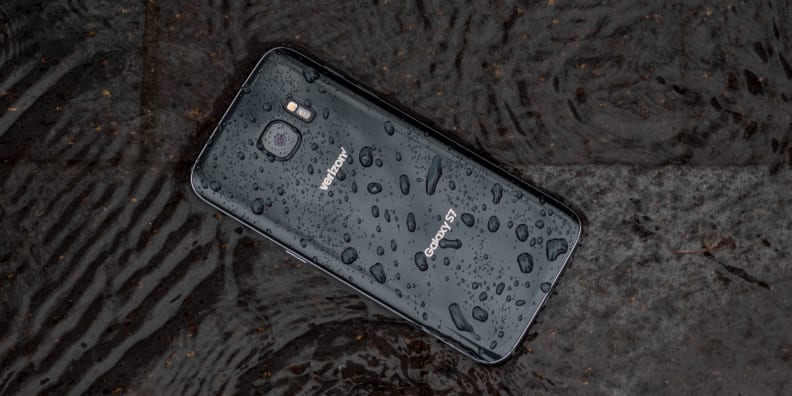
The S7 can be submerged for an extended period of time without any damage to the phone's internals.
If all this wasn't enough, I haven't even begun to touch on one of the more satisfying aspects of the S7's build—its IP68 water-resistant rating, which assures that your precious new device will be able to withstand rain, snow, dust, and yes—even toilets.
The S7 is so water-resistant, in fact, that Samsung assures us that it can withstand up to a half hour of submersion beneath one-and-a-half meters of water. I wouldn't recommend taking it scuba diving with you, but consider the days of worrying about rain or spilled drinks over.
Like every Samsung smartphone, you're in for a world of bloatware when you boot up your S7 for the first time—especially if you nab the Verizon version we tested. There'll be junk from your carrier, junk from Amazon, and junk from Samsung itself. It doesn't take long to sift through the muck and manage all of it, but it's one of the things that always makes me long for a pure Android experience instead of Samsung's Android experience.
The Camera
Almost immediately after unboxing the S7 and the S7 Edge my coworkers and I began marveling at how quickly both of their cameras snapped into focus and fired off shots. When we put it up against the S6 Edge+ and the iPhone 6s, it was clear how much the S7's autofocusing capabilities have improved since last year.
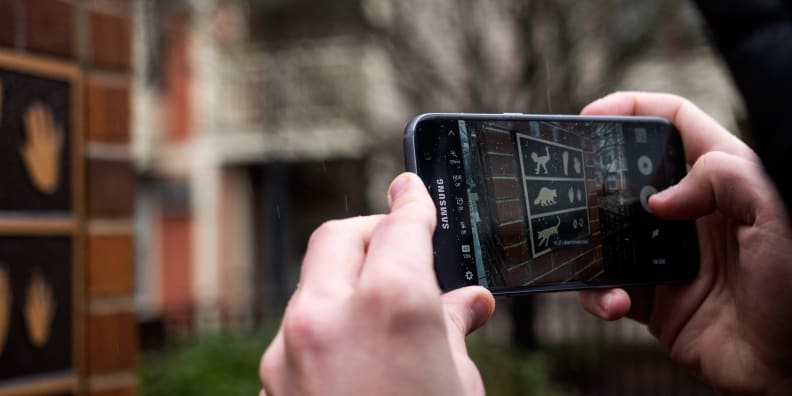
The camera's autofocus is incredibly fast.
The S7's camera is reliably solid in almost every conceivable setting. In low-light conditions, the S7 tampers down on noise without smudging too much detail. In brightly-lit environments, the S7's photos are sharp, clear, and accurate, if slightly oversaturated.
Amateur and professional photographers will absolutely adore the S7. It shoots both RAW photos and 4K video, and Samsung's camera app has enough settings to satisfy everyone's inner-shutterbug.
{{ photo_gallery name="Samsung Galaxy S7 Sample Photos" }}
At first glance, a 12-megapixel primary camera may seem a bit stingy, but Samsung has opted for a lower resolution in favor of larger individual pixels. Larger pixels equals an increased sensitivity to light, which ostensibly leads to better low-light photos and less noise.
Take the photo below, for example. The sun is behind the buildings, so at the time, the street the photo was taken on was much dimmer than it appears in the photo. Since the S7's camera sensor is capable of taking in more light, not-so-bright pictures still pop without looking overexposed.
The camera's also equipped with optical image stabilization; a feature present in some (but not all) of the best smartphone cameras of last year. Its inclusion contributes to the S7's stellar performance in low-light settings.
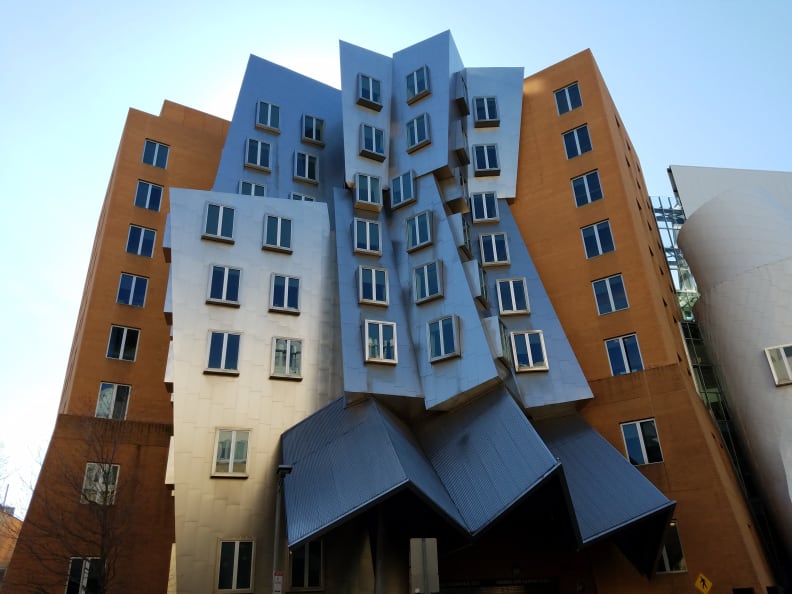
The S7's 12MP camera might not seem as impressive as the S6's 16MP camera at first glance, but the larger pixels in the S7's camera sensor allow it to capture low-light shots with better accuracy.
The only area where the S7 struggled to perform was beneath incandescent lighting. Of all the conditions we examined, incandescent bulbs were the S7's biggest enemy.
The S7's camera is only a minor improvement over the S6's camera, and the biggest improvement you're likely to notice is in the increased speed of the camera's focus. The lack of any major improvements isn't necessarily a bad thing, though—it's still pretty hard to come across smartphone cameras that perform at this level.
It's not revolutionary, but it's a reliable camera in just about every way.
The Verdict
The Galaxy S7 doesn't take any risks, and it's certainly not built around a single idea, like the Nextbit Robin, for example.
Instead, it's built to perform at the highest level in every capacity, whether in design or performance. Samsung didn't revolutionize the S7's camera because the S6 already had a fantastic camera. It didn't throw out the S6's design elements because, frankly, that phone handled really well.
But Samsung also realized that it could upgrade the Galaxy's battery without straying too far from its design. Expandable storage is back on the table now, too, because people wanted it. And how about waterproofing, while we're at it?
That, to me, is the ultimate indicator of the S7's success: Its improvements were minor but carefully considered. Unlike certain flagships (the HTC One M9 comes to mind), it doesn't rest on the laurels of its previous generations. Rather, Samsung identified key areas that needed improvement and set out to make them better.
That kind of attention to detail is certainly worthy of respect, and at the end of the day, the Galaxy S7 is worthy of your money.
Related Video
{{brightcove '4792095979001'}}
Meet the tester
Michael Desjardin graduated from Emerson College after having studied media production and screenwriting. He specializes in tech for Reviewed, but also loves film criticism, weird ambient music, cooking, and food in general.
Checking our work.
Our team is here for one purpose: to help you buy the best stuff and love what you own. Our writers, editors, and lab technicians obsess over the products we cover to make sure you're confident and satisfied. Have a different opinion about something we recommend? Email us and we'll compare notes.
Shoot us an email

